We’re Really Loving These Gorgeous Baskets from Wovn Country
Vermont-based weaver Alexa Rivera fashions both classic and contemporary vessels in her Burlington studio.

Spools of reed fill weaver Alexa Rivera’s studio at the Hive on Pine art collective in Burlington, Vermont. “It’s a privilege to have dedicated space to make your art,” she says.
Weaver Alexa Rivera taught her first basket-making class in the summer of 2016. She assumed the turnout would be small—just a group of friends and acquaintances learning how to make a “Garden Harvest” basket, a rectangular, plain-woven reed structure. Her primary goal? To create a space for others to practice the calming, meditative process of weaving. For Rivera, who cultivated her attachment to the art form while growing up in New York’s Hudson Valley, weaving isn’t a passive task. It’s an experience, she says, that can last anywhere from hours to entire days. “It takes patience, and there’s no instant gratification.”
As it turned out, the Facebook post Rivera created for the semi-impromptu lesson—hosted in a field behind her friend’s rural Vermont home—had reached farther than she anticipated. The field unexpectedly filled with people who had been admiring her work online, and after the class, her meticulously made baskets quickly gained more traction. “The communication network here is so small, [word spread about my work] before I even recognized it,” says Rivera, who started her Burlington-based business, Wovn Country, a year later. “I got on board the train while it was already moving.”
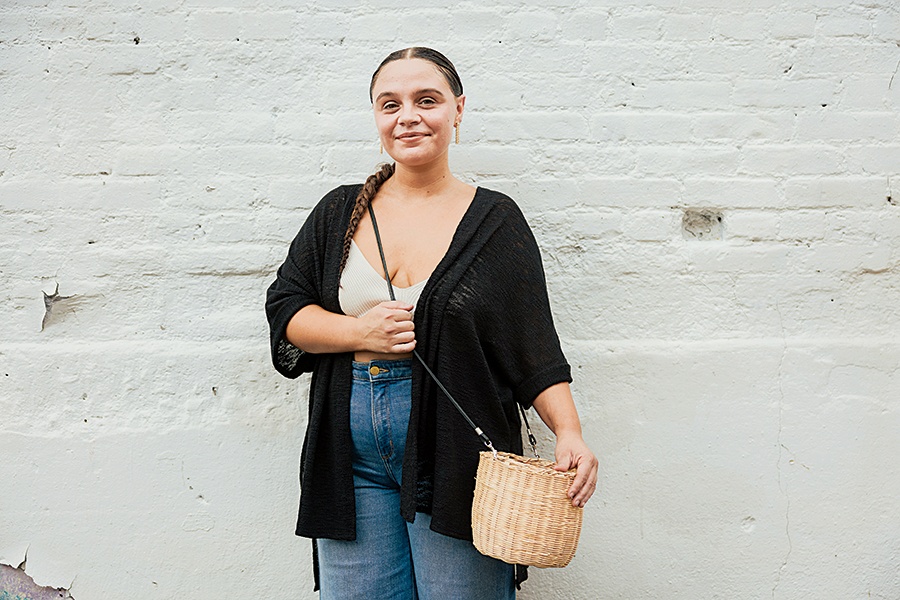
Photo by Oliver Parini
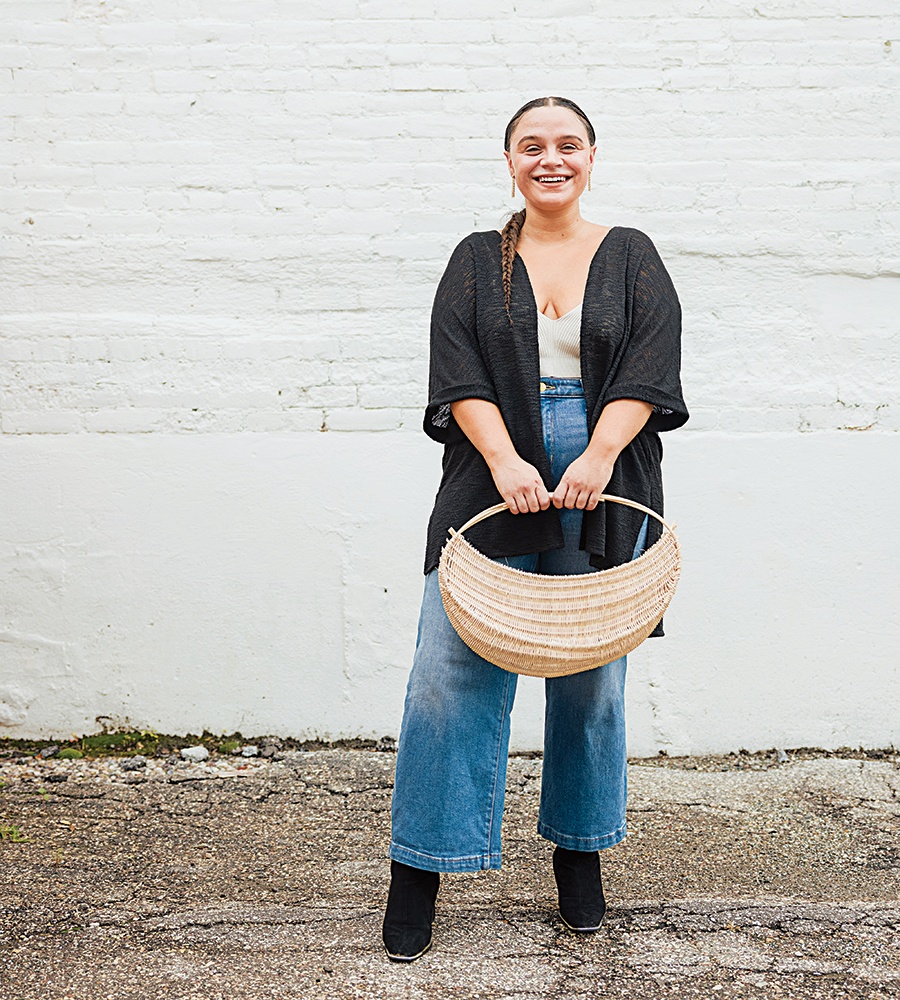
Rivera started weaving in middle school, then rediscovered her love for the process years later. “I’ve always come back to [weaving]. It’s something that makes sense to me on a gut level,” she says. “I find it really beautiful.” / Photo by Oliver Parini
Now, in her studio at the Hive on Pine art collective, the 27-year-old Rivera works primarily with reed, twining traditional basket patterns and her own contemporary creations. For the reed to stay pliable, it must be repeatedly soaked in water throughout the weaving process, which Rivera accomplishes with an in-house arsenal of lobster pots (because it is New England, after all). From then on, her hands are her primary tools, strategically manipulating the material into beautiful, yet functional, baskets, purses, and other vessels. “It’s just building the frame and weaving around it,” she says—as if the process were really that simple.
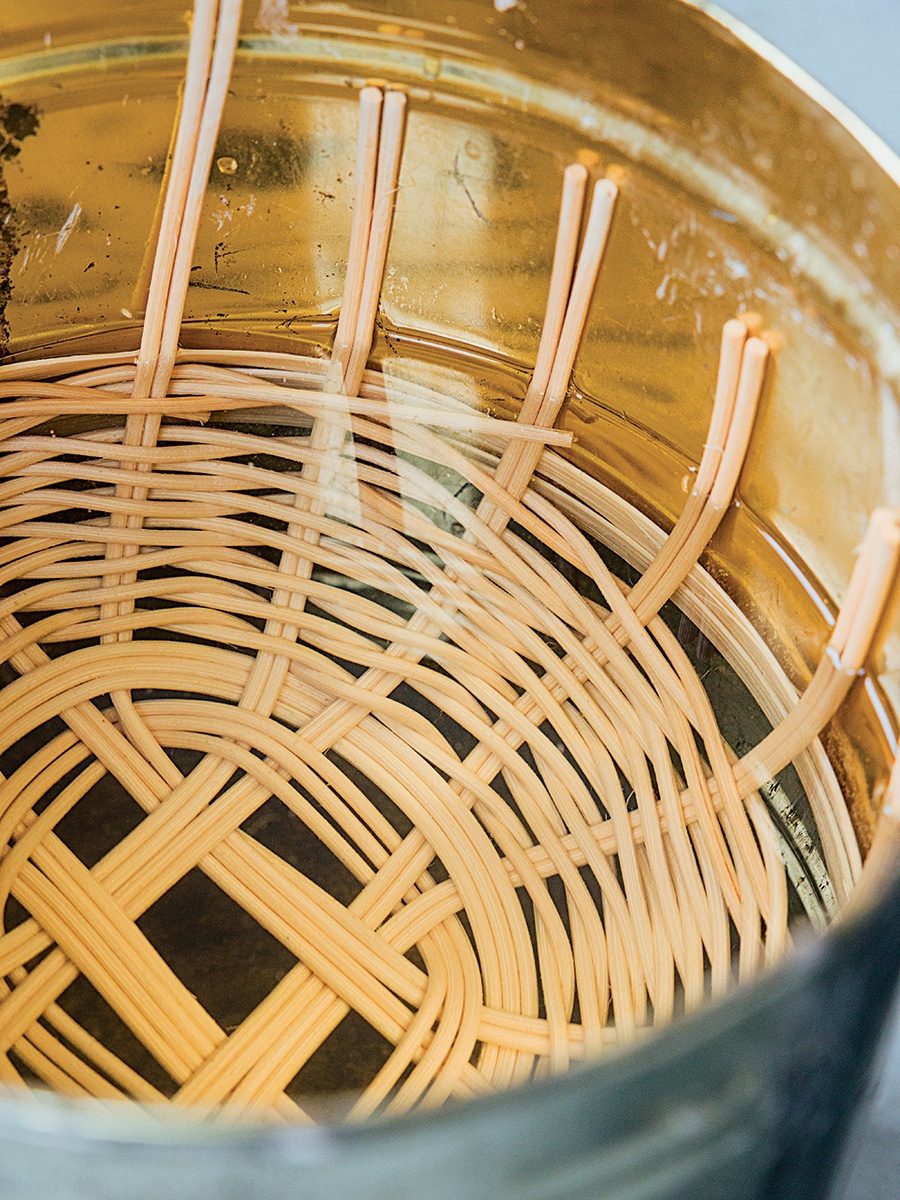
In her early weaving days, the maker soaked baskets in her bathtub to keep the material pliable. “But there comes a point [when] your tub can’t be full of baskets,” Rivera notes. Now, lobster pots in her studio serve the same purpose. / Photo by Oliver Parini

Rivera weaves strands of reed over and under the “spokes,” which form the piece’s structural support system, to fashion the base of a basket. / Photo by Oliver Parini
First, a frame is built with long pieces of reed, or “spokes,” which jut out from a flattened, knot-like center to provide support and dictate the basket’s shape. Rivera then winds more strands (the “weavers”) over and under the spokes, while slowly molding the container’s walls with her hands. “It’s almost like clay, or a sculpture,” she explains. “You’re actively shaping it in the direction you want it to go.”
Many of Rivera’s baskets are skillful executions of centuries-old patterns with rich ancestral histories. Take the “Adirondack Pack” basket, for example. Dating to 900 BC, the wide-bellied, curved backpack was used by Native American trappers and fishermen to transport supplies for their community. Rivera’s reed-and-leather versions follow the pack’s traditional design. “It’s vital for me to preserve these traditions,” she says.

Many of the weaver’s pieces, like her “Adirondack Pack” basket, honor traditional patterns with deep cultural roots. / Photo by Oliver Parini
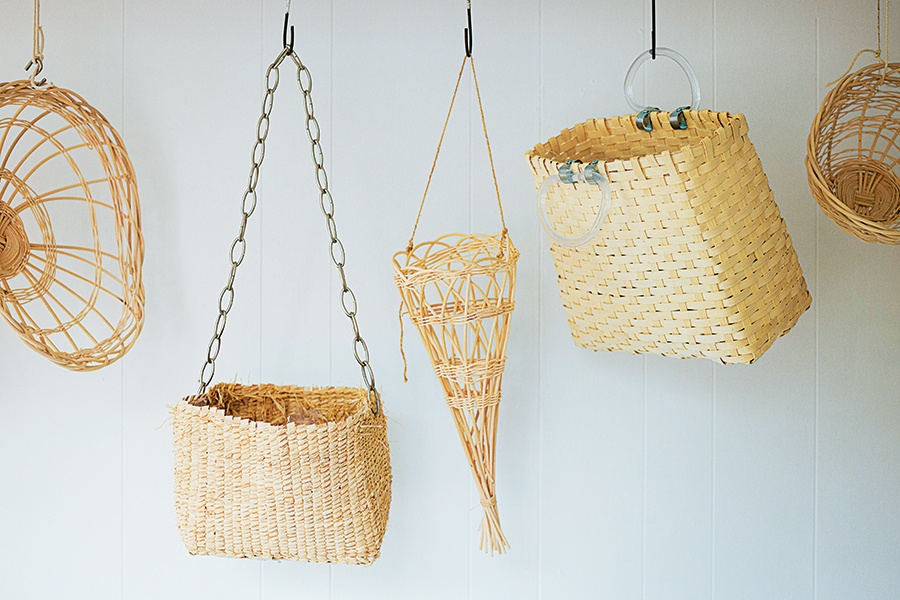
Completed baskets— which often include touches of unexpected materials, such as leather and metal chains— hang in her studio. / Photo by Oliver Parini
The pandemic, however, afforded Rivera time to find her own voice and artistic style, expanding on ancient weaving techniques to design more experimental objects. An innovative, and decidedly practical, basket on wheels is one of her most recent creations. Dubbed the “Bodega” basket and inspired by Rivera’s trips to visit family in Manhattan and Brooklyn, it’s a woven version of the portable, folding shopping carts ubiquitous on city dwellers’ trips to the corner store. Her slightly more artistic designs include a banana-shaped container made from rounded reed, inspired by a bridge’s reflection over water, and a decorative, open-weave lampshade with light spilling from between the reeds.
While the artistry of the practice is evident in Rivera’s work, it’s the tradition of weaving that drives her. As she puts it, the craft is “as old as human history,” connecting her to millions of weavers (and their work) both today and from centuries ago. But for Rivera, more important than the making of her pieces is the significance of their function. “If you carry only what you can hold [in your two hands], that’s very individualistic,” she says. “With baskets, you’re collecting an abundance of things—[historically], water, food, and medicines. In a symbolic sense, they’re about the collection of what we need for each other.”

Rivera uses tools such as clamps and flathead screwdrivers for small adjustments and finishing touches. / Photo by Oliver Parini
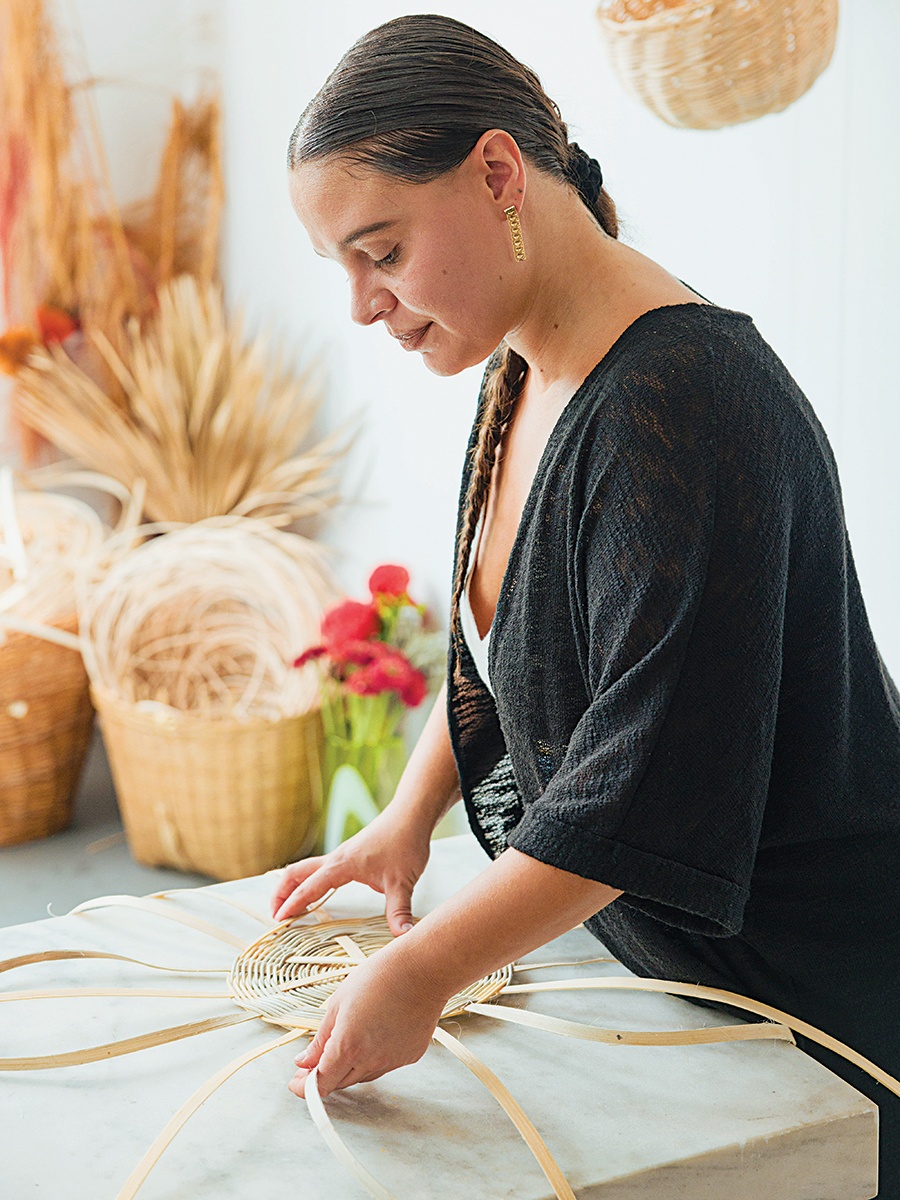
For Rivera, the process of weaving is just as meaningful as the result. “Making something with your hands is not something people do every day,” she says. / Photo by Oliver Parini
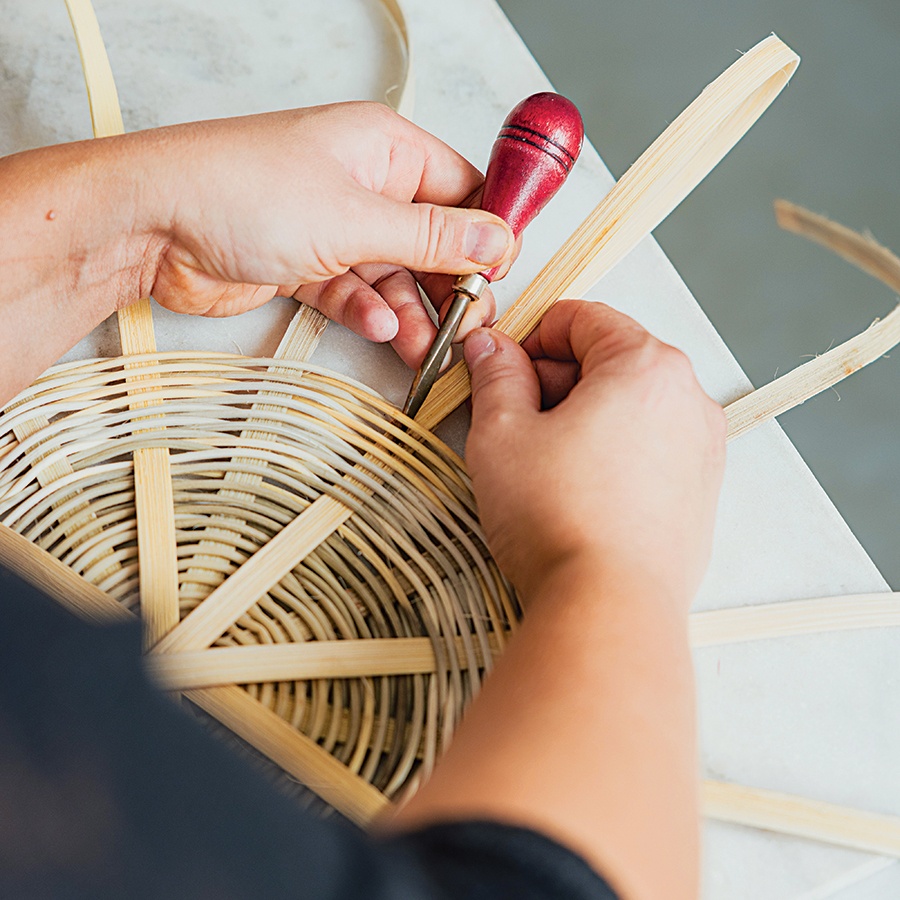
Photo by Oliver Parini


